
Purpose This study confirmed the historical significance of the First World War US Combat Strength Training Fitness System for contributing in the ROK military sports development. Methods This research method is literature analysis to be focused by the previous US Army Field Manuals. Results Concretely, The meaning of US Army fitness training was divided into four stages. First, this study confirmed the actual condition of the US Army fitness before First World War. Since 1916, US Army has developed a group physical training program applied the items suitable for the war and has systematically reflected the program in the recruitment training. Second, this study confirmed the process of operating military fitness program during the First World War. US Army physical fitness program provided an effective method to suit soldier fitness for war. Third, this study observed the fitness training changes of US Army after the First World War. At that time, US Army focused on maintaining health and basic physical strength for civilians and reserve forces, but US Army ran parallel with basal physical fitness and combat physical fitness after the Korean War. Fourth, this study compared military strength training between First World War and current US Army. Since First World War, the training of US Army has been developed around doctrine and manuals to be maintained the consistency of the system. In conclusion, US Army physical training system of First World War meant to be provided the basis of current military physical education and physical training. In other words, current fitness training is not dogmatic but has evolved, and it accommodated the basics of soldier physical training course from the past.

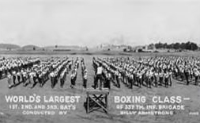
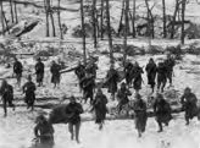


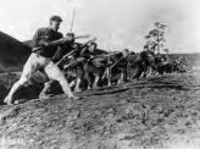

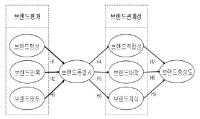
This study is aimed at identifying the relationship among brand evaluation, brand identification, brand relationship, and brand loyalty towards professional baseball title sponsors in an empirical manner. The target of this study is 'Korea Yakult,' a baseball title sponsor in 2014. A survey was conducted on 377 home crowd members of Nexen, Doosan, LG and SK based in metropolitan regions. Sampling method was Convenience Sampling Mode, and questionnaire has been structured to be self-administerd type. SPSSWIN Ver. 21.0 and AMOS 18.0 have been used for data processing. The findings are as follows. First, the brand reputation had a significant impact on brand identification. Second, the brand satisfaction had no significant impact on brand identification. Third, the brand attitude had a significant impact on brand identification. Fourth, the brand identification had a significant impact on brand suitability. Fifth, the brand identification had a significant impact on brand attachment. Sixth, the brand identification had a significant impact on brand knowledge. Seventh, the brand suitability had a significant impact on brand loyalty. Eighth, the brand attachment had a significant impact on brand loyalty. Ninth, the brand knowledge had a significant impact on brand loyalty.

The purpose of this study is to investigate the further direction of molecular biological studies, the advantages and limitations of assaying samples, and variables in figuring out the details of domestic and overseas studies verified through cell and molecular biological analysis in order to analyze the effect of concurrent training. The analysis study was limited to domestic and overseas literature, which investigated the effect of combined training using molecular biological analysis among studies to date. The study was reclassified by specialty, composed of professors of physical education and doctors of exercise physiology. The final selected study analyzed the subject and the trend of studies in terms of comprehensive perspectives. In detail, it analyzed hormonal and enzymatic changes in criteria such as leptin, 5-HT, ACTH(adrenocorticotropic hormone), cortisol, testosterone, GH(growth hormone), LDH(lactate dehydrogenase), CPK(creatine phosphokinase), antioxidants in blood samples and protein, and enzymatic and morphologic changes in for CRP, VEGF(vascular endothelial growth factor), PAI-1(plasminogen activator inhibitor-1), MAD(malondialdehyde), carnosin, and SDH(succinate dehydrogenase), the area of muscle fibers, ratio of type Ⅰ/Ⅱ muscle fiber and capillary proportion per muscle fiber in the extracted muscle by biopsy, for example. Finally, urine samples, and hormonal changes (like cortisol), were analyzed. The results of the analysis of domestic and overseas studies according to combined training has shown that this training has more varied effects than single training and lower improvement by interference effect or magnifying the effect of one type of training amongst the combined training types appears, rather than higher improvement through combined trainings. Therefore, it should be investigated in view of performance improvements relating to the characteristic of sports.
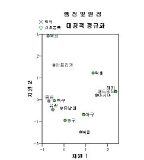
To activate the export of defense industry, our government approach a niche market by various advertising and revising policy. However, techniques of current Korea defense industry are difficult for market development of various aspects. Thus a new approach of overcoming existing export marketing strategy is needed. this study presents a strategy for exporting country, which is to activate the export of defense industry through military-sports diplomacy. The military-sports diplomacy is chosen because several cases confirm the sports diplomacy is an effective instrument which can develop political relationship between countries. a research needs to be done to check if Export target countries' preference for sports and possibilities of supporting should be investigated. by combining experts' opinion result using correspondence analysis, the following analyses of defense industry export activation strategy via Sports-diplomacy can be suggested. Overall, Sports policy action to expanse Export target geographical areas is strengthening ties for using soccer, badminton, hockey sports with each other. Detail, sports policy in the proportion of low-country exports must be to use badminton, hockey, rugby which prefer in asia area. and sports policy in the proportion of exports to the high country must be to use soccer, basketball, field and track events which prefer in Africa and Central and South America. area. In suggestion, The research concluded that information exchange between Defense Acquisition Program Administration and Korea military sports organization is needed, and the compatibility of exporting weapons to target countries is a priority while executing sports diplomacy.



Purpose This study was conducted to investigate the appropriateness of the concept of condition for athletes and to conceptualize condition in a way suitable for field and then to produce a tool to test condition that reflects usability. Methods 30 college athletes and national athletes with more than 5 years of experience were selected. In the conceptual review stage, the appropriateness of the concept of condition was verified. In the conditional element collection stage, the condition concept reflecting usability was extracted. In the development stage of the conditional questionnaire, a condition questionnaire was developed in consultation with the data provider to reflect usability. Results Previous studies on the condition of athletes were complicated and the necessity for consideration of usability was raised. As a result of conceptualization with consideration of the application to the sport scene, condition in a scene is summarized into both physical and psychological states. As a result of the appropriateness evaluation of the tool that produced the condition inspection tool reflecting the condition element based on universality and peculiarity of conditionality, the athletes evaluated that the condition inspection tool properly reflects condition, is easy to apply and can be used for condition control. Conclusion The development and application of psychological testing instruments reflecting usability will accelerate the application of sports psychology in the appropriate direction. The reflection of usability will contribute not only to the reliability and validity of the psychological testing tools used in the field of sports psychology, but also to the improvement of the possibility of intervention by leaders and athletes, the convenience of development procedures, and the utility of response results.

This study aims to identify the characteristics of character education contained in National Physical Education Curriculum in terms of contents and construction, problems and limitation, and improvement plans by analyzing character texts such as the concept, expression mode, and context of character in goals, contents, teaching and learning methods, and evaluation of Physical Education Curriculum in accordance with the 2009 Revised National Curriculum. For criteria of analysis, character and character education were defined in a conditioning manner in terms of emotion, sociality, and morality, which grasped the implication based on the concept, meaning, and context of character text by using content analysis. The character education of National Physical Education Curriculum has currently compensated the concept of creativity‧character, and core competency as of the 2007 National Physical Education Curriculum, defining the concept of character as desirable personality, sociality, and morality, and setting up self management ability and interpersonal relationship ability as category. However, herein identified were ambiguity of the meaning between character and other concepts and ambiguity of the meaning boundary of detailed virtue in the concept of character in terms of the concept and the range of character, insufficiency of school-level systemicity and sequence between curriculum items in terms of character text selection and organization, and deficiency of the character education principles of physical education and practical teaching and learning methods of it in terms of character education methods. For next revision of National PE Curriculum, a full consideration is required for providing principles of teaching and learning methods on character and evaluation cases based on research on conceptualization of physical character, research on suitability and sequence of content subsystem of character, and cases of field practice.
PURPOSE For student-athletes to be able to successfully dedicate themselves to training and competition, the following key factors play an important role: The coach, team climate, and individual motivational characteristics. To test this hypothesis, the structural relationships between having a perceived autonomy support, a caring climate, basic psychological needs, and sport commitment were analyzed. METHODS Participants were 297 high school athletes registered with the Korea Olympic Committee (203 males, 94 females, Mage=17.88 years). Data were collected using sports climate questionnaires for autonomy support, caring climate scale, basic psychological needs scale, and sport commitment measurement. The collected data were analyzed using descriptive statistics, correlation analysis, and structural equation modeling. RESULTS The model’s fitness was indicated by x2/df=2.797 (x2=106.288, df=38), CFI=.977, TLI=.967, RMSEA=.078 (90% CI=.061, .096). Examining the various path coefficients revealed that coach autonomy support had a positive effect on the athlete’s caring climate, basic psychological needs, and sport commitment. The caring climate had a significant effect on basic psychological needs, but did not have a statistically significant effect on sport commitment. Finally, basic psychological needs had a positive effect on sport commitment. CONCLUSIONS Coach autonomy support fosters a caring climate, and athletes who are able to perceive this are able to dedicate themselves to their sport since their basic physiological needs are met. Therefore, coaches should use appropriate coaching strategies to enhance athletes' autonomy and foster a caring climate, as both are essential factors for meeting athletes' psychological needs and promoting sport commitment.
PURPOSE This study both validated the Characteristics of Resilience in Sports Teams Inventory (CREST) scale for use in Korean sports and analyzed the impact of team resilience on teamwork and performance. METHODS The study surveyed 462 elite football players by using the CREST scale to measure team resilience in Korean sports. Data were analyzed using descriptive statistics, exploratory factor analysis (EFA), reliability analysis, correlation analysis, multiple regression analysis, and confirmatory factor analysis (CFA). RESULTS First, results confirmed that the CREST scale’s two main factors—resilient characteristics and vulnerabilities under pressure—can be meaningfully applied in the Korean context. Second, resilient characteristics showed positive correlation with life skills, whereas vulnerabilities under pressure showed negative correlation. Third, resilient characteristics positively predicted life skills, whereas vulnerabilities under pressure negatively affected life skills. CONCLUSIONS The CREST scale was found reliable and valid in the Korean sports context, demonstrating that team resilience significantly impacts life skills. Thus, the study contributes to evaluation of resilience in Korean sports teams and provides strategicinsights to improve team performance.
PURPOSE This study aimed to develop a Korean version of the Low Energy Availability in Females Questionnaire (LEAF-Q) by translating the original English version into Korean using cross-cultural translation guidelines and conducting a face validity assessment. METHODS Following structured cross-cultural translation guidelines, a provisional final version (Pre-K-LEAF-Q) was created through initial translation, synthesis of initial translations, back translation, synthesis of back translations, and expert committee review. Additionally, its face validity was tested with 30 female participants. RESULTS After completing the translation process, the expert committee comprehensively compared each translation to finalize the Pre-K-LEAF-Q. This version was crafted to ensure semantic, idiomatic, experiential, and conceptual equivalence. Among the 30 females who participated, three noted that certain phrases were unclear or awkwardly expressed. The expert committee reviewed these five comments from the face validity test and modified three of the phrases. CONCLUSIONS The K-LEAF-Q was developed through cross-cultural translation and face validity testing to suit the cultural and linguistic context of Korea. It is expected to be a valuable tool for Korean female athletes.

The present study has been carried out with a purpose of a long term estimation for the body size and BMI (Body Mass Index) of Korean children and youth using ARIMA, a time series model. In order to select an estimation model for the optimum time series, among the time series analysis method of SPSS22.0 statistic programs, a multivariate ARIMA (p,d,q) model has been selected that has an input series (physical education facility, time spent for physical education, animal source foods, GDP deflator, animal source food intake ratio), using annual average data of height, weight, and BMI data from 1965 to 2015. Among the several optimal measurements in ARIMA model with estimation variables, an optimal RMSE-based model (RMSE: Root Mean Square Error) has been selected. Using this model, the estimation model and estimated values of children’s height, weight, and BMI have been suggested for each age group. The results are as the following. The trend estimation of height follows a logistic curve, with both male and female groups showing increasing trends. The weight has a trend of increasing ratio higher than height. BMI also shows a trend curve similar to weight. The estimation model has been mostly ARIMA(0,1,0). In particular, the average BMI has been estimated as 22-23 for male students in 6th, 8th, 9th, 11th and 12th grade in 2030. This indicates the recent increasing obesity as children and youth occupy most of daily time for play culture that is far from physical activities, such as computer games, smartphone games, and video games at home.





